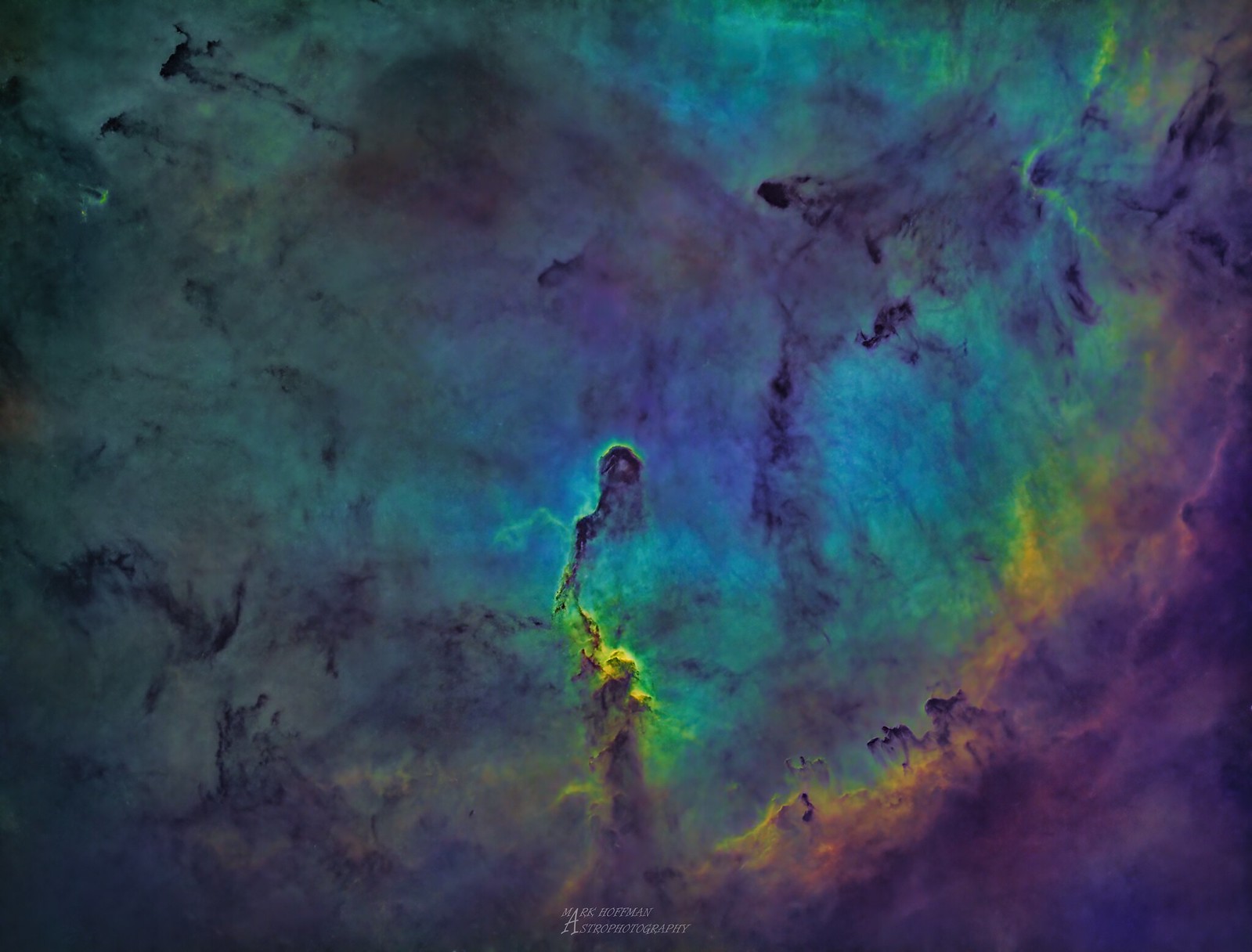IC 1396 Elephant's Trunk Nebula
https://www.flickr.com/photos/194543639@N07/
https://www.instagram.com/mark_hoffman_photography/
Copyright: Mark Hoffman
With Stars:

by
mark h, on Flickr
Starless:

by
mark h, on Flickr
IC 1396
Equipment/Capture Details:
Williams Optics Z73
EQ35-Pro
ZWO ASI EAF
ZWO ASI 120MM
ZWO ASI 1600MM Pro
ZWO ASI 7 position EFW
Kendrick Dew Heater
Pegasus Pocket Powerbox Mini
36mm Astronomik 6nm Ha, O3, S2 filters
Total Integration Time = 35 hours
Ha Integration Time = 85 * 480sec
O3 Integration Time = 199 * 240sec
S2 Integration Time = 69 * 540sec
Virginia, USA
Bortle 7
Capture dates: 12/4/2022, 12/9/2022, 12/13/2022, 12/16/2022, 12/18/2022, 12/19/2022, 12/25/2022, 12/27/2022, 12/28/2022, 12/29/2022, 1/5/2023, 1/9/2023, 1/15/2023
Pixinsight: NoiseXterminator and deconvolutiuon of Ha linear image (star mask/psf image); RGB combination; StarXterminator; Generalised Hyperbolic Stretch script to equalize each RGB channel’s histogram; red/green/blue/yellow/magenta/cyan color masks with curves; dark structure enhance; GHS script for nonlinear stars; correct magenta stars; curves and saturation; combine stars and starless.
Photoshop: Highlights/Whites/Shadows/Clarity
From Wikipedia:
"The Elephant's Trunk Nebula is a concentration of interstellar gas and dust within the much larger ionized gas region IC 1396 located in the constellation Cepheus about 2,400 light years away from Earth. The piece of the nebula shown here is the dark, dense globule IC 1396A; it is commonly called the Elephant's Trunk nebula because of its appearance at visible light wavelengths, where there is a dark patch with a bright, sinuous rim. The bright rim is the surface of the dense cloud that is being illuminated and ionized by a very bright, massive star (HD 206267) that is just to the east of IC 1396A. The entire IC 1396 region is ionized by the massive star, except for dense globules that can protect themselves from the star's harsh ultraviolet rays.
The Elephant's Trunk Nebula is now thought to be a site of star formation, containing several very young (less than 100,000 yr) stars that were discovered in infrared images in 2003. Two older (but still young, a couple of million years, by the standards of stars, which live for billions of years) stars are present in a small, circular cavity in the head of the globule. Winds from these young stars may have emptied the cavity.
The combined action of the light from the massive star ionizing and compressing the rim of the cloud, and the wind from the young stars shifting gas from the center outward lead to very high compression in the Elephant's Trunk Nebula. This pressure has triggered the current generation of protostars."











